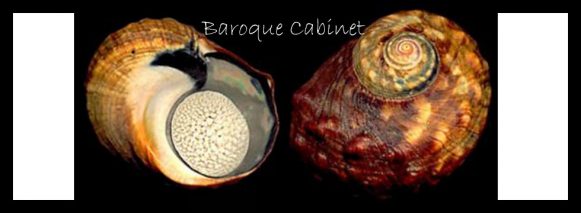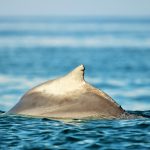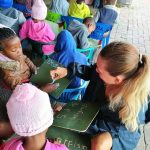Edible, exploited, endemic alikreukel

The South African marine resources have been exploited for subsistence purposes for thousands of years, but recently with rapid population growth, and a high concentration of people moving into coastal areas, the exploitation has intensified.
Many subsistence fisheries are focused on intertidal and estuarine invertebrates, with the alikreukel Turbo sarmaticus being one of these species. Alikreukel, olly croc, olly krik, giant turban, giant periwinkle.
Many names for a slow-growing, herbivorous seasnail. Alikreukel are found in lower intertidal and subtidal zones, to a depth of 8m. They are endemic to South Africa, only being found from False Bay to Transkei. Alikreukel are collected for food, and bait, and has no commercial value. They are the largest growing of four Turbo species found in this area, though little is known about the genus Turbo in southern Africa.
The alikreukel has not yet been assessed by IUCN, though protective legislation for this species already exists with a bag limit of 5 per person per day, and they must not be able to pass through a ring of 63.5mm in diameter.
It takes an individual 3-4 years to achieve that size, and they only grow to roughly 100mm. Unfortunately, despite these protective measures it has become increasingly difficult to find large individuals except in marine reserves.
It has been shown that densities of legal-sized alikreukel are negatively related to the number of collectors on the beach, number of households in the vicinity, and distance to nearest beach access. Alikreukels have an operculum which acts as a front door which they are able to close when the animal retreats, and to prevent water loss.
In this species the aperture and operculum are circular in shape, with the operculum’s outward facing surface being covered in densely packed, coarse nodules. Often empty shells can be found in Nature’s Valley.
Written by: Minke Witteveen
For further reading:
- Branch, G.M., Griffiths, C.L., Branch, M.L. and Beckley, L.E. 2010. Two Oceans: A guide to the marine life of southern Africa. Pp. 178. Random House Struik Publishers, Cape Town.
- Bruton, J., Baird, D. and Coetzee, P.S. 1991. Population structure and yirld-per-recruit analysis of the giant periwinkle Turbo sarmaticus in the Cape St Francis region, South Africa. South African Journal of Marine Science 11: 345-356.
- Proudfoot, L., Kaehler, S., McGarry, D.K., Uppink, P.A., Aereboe, M. and Morris, K.M. 2006. Exploitation status of infralittoral abalone (Haliotis midae) and alikreukel (Turbo sarmaticus) in the southern section of the Eastern Cape coast, South Africa. South African Journal of Science 102: 162-168.



